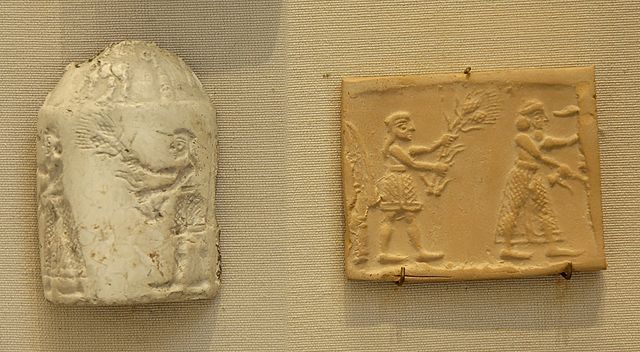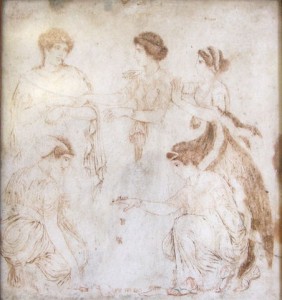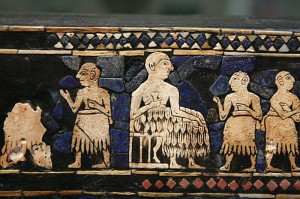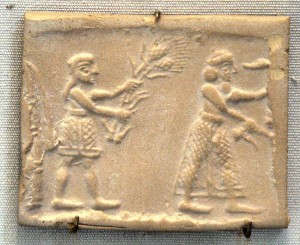I’m blogging today about a piece of information about cylinder seals I ran across in a children’s nonfiction book on Mesopotamia. The book is Passport to the Past: Mesopotamia by Lorna Oakes.Cylinder seals are small cylindrical carved pieces designed to make impressions in clay. They were used in Mesopotamia to sign documents and affix ownership. Kings, officials, and just about anyone with wealth or rank had their own unique seal which they guarded carefully. These seals might be carved of ivory, shell, bone, limestone, or lapis lazuli. According to Oakes, some believe these seals evolved from sheep knuckles used for the same purpose. The book has a picture of a seal with a knob in the shape of a sheep. I could not find a public domain photo of this cylinder, but I did find another cylinder pictured here that has sheep carved into its knob.

Category: Mesopotamia
Tasting Life to Its Fullest: My Love Affair with Mesopotamian Culture
April 4, 2014
In writing this book I did not intend to provide an exhaustive, scholarly study of eating and drinking among our venerable ancestors from ancient Mesopotamia. Such a work would have been tedious and dry, addressed (at the expense of honest readers) only to academics, who scarcely need it and may not want it.
I am not an academic or a scholar, so I appreciate that attention was paid to making the study of Mesopotamian cuisine interesting. I have, however, read a fair amount about the Sumerians and Akkadians, more than the average Pagan, so I also have some general context in which to place this cornucopia of information about food. One thing that jelled for me in exploring this book, which had only vaguely registered before, was an appreciation for the enthusiasm with which the ancient Mesopotamians approached the business of life. This can be glimpsed in their descriptions of their games, in the homage paid in word and picture to lovemaking, and in the exuberance with which the hero Gilgamesh throws himself into adventure, friendship, and even sorrow. Yet it was only in studying the art and excess of their food and drink that I came to recognize the Mesopotamian commitment to enjoying life. This was not merely the hedonism of “eat, drink, and be merry,” although sensuality certainly played a part. Mesopotamians worked as hard as they played, and they took significant pride in their accomplishments. They also loved hard: they loved their cities, their craftsmanship, their civilization, and the gods who rewarded them so generously for their labors. Their joie de vivre was not tempered by cynicism, as it so often is today, although they had a fine appreciation for ironic humor. If in the ancient world the Egyptians strove to be memorable, the Israelites to be good, the Greeks to be wise, the Romans to be victorious, the Celts to be honorable, and the Germans to be brave, the Mesopotamians strove to extract the most satisfying enjoyment possible out of life.In closing let’s turn once again to the words of the tavern keeper, sometimes identified as the goddess Ninkasi, to Gilgamesh
Humans are born, they live, then they die,this is the order that the gods have decreed.But until the end comes, enjoy your life,spend it in happiness, not despair.Savor your food, make each of your daysa delight, bathe and anoint yourself,wear bright clothes that are sparkling clean,let music and dancing fill your house,love the child who holds you by the hand,and give your wife pleasure in your embrace.That is the best way for a man to live.
SourcesBottero, Jean. The Oldest Cuisine in the World: Cooking in Mesopotamia. Translated by Teresa Lavender Fagan. Chicago: University of Chicago Press, 2004.Mitchell, Stephen. Gilgamesh: A New English Version. New York: Free Press, 2004.
